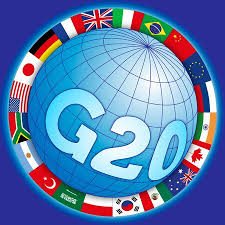Leading industry research analysts along with global experts in the field of optical imaging technology have shed light on what the smartphone industry can expect in 2022 with respect to mobile cameras, during a webinar titled “Global Mobile Camera Trends 2022: Innovation Talk”.
Discussions focused on how camera systems are evolving, and how they have become critical for OEMs as consumers place increasing importance on image capture. Innovations such as the combination of quality image sensors and advanced software algorithms, light sensitivity, image and video stabilization, and continuous lossless zoom have been highlighted by these industry players as Mobile camera trends to continue in the coming year.
The webinar was organized by leading technology research firm Counterpoint, and included were guest speakers from TECNO, a global smartphone brand focusing on rapid-growth in emerging markets, Samsung Electronics, a global leader in semiconductor, telecommunication, digital media and digital convergence technologies, and DXOMARK, an internationally renowned testing agency specializing in cameras, audio, displays, and batteries for consumer electronics.
Hosted by Counterpoint Research’s Peter Richardson, VP of Research, speakers Tarun Pathak, Hervé Macudzinski, Pan Xuebao, and Jimmy Hsu shared their insights on camera innovation, market trends, and the latest developments in imaging technology.
Tarun Pathak, research director for smartphones at Counterpoint, highlighted that burgeoning mid-end smartphones across both developed and emerging markets like Africa, Latin America and India will help form factors of quad-cameras and above to dominate. Mr. Pathak also sees “the combination of quality image sensors and advanced software algorithms allowing brands to deliver great imaging experiences across all smartphone price points.”
DXOMARK’s Hervé Macudzinski, Image Science Director and Product Owner of DXOMARK observed that smartphones today help bring DSLR capture quality and pro photographer’s skills into the hands of consumers. Further, he sees low-light imaging as a priority for devices in the highly competitive $400-$600 price bands – where significant improvements can be made.
Samsung Electronics’ VP and Head of R&D, Pan Xuebao, believes “We’re close to the point where smartphone brands can now deliver DSLR-grade photography in the hands of customers.” He mentioned Samsung’s Tetra and Nona technology is bringing great performance across both bright and low light conditions by providing a bigger canvas to capture more light, while allowing smaller pixels for higher definition. Speed is also prioritized, with ISOCELL bringing faster autofocus capabilities.”
Jimmy Hsu, Senior Product Manager of TECNO Image Technology, mentioned that demand for more diverse features and personalization could drive demand for ToF (time of flight) and DVS (dynamic vision sensor), which would help smartphone cameras rival and outperform specialized cameras. TECNO already focuses on personalization, with advances in dark complexion imaging aimed at users across key markets in Africa, India and other regions, with Hsu highlighting recent achievements and breakthroughs regarding light sensitivity, image and video stabilization, zoom and high-resolution – powered by technologies such as RGBW and G+P, Sensor Shift and telescopic lenses. He promised some of these new technologies are slated for TECNO’s new products in 2022. Hsu also emphasized that “TECNO always aims to provide an excellent photo and video experience through constant innovation and a deep understanding of consumers’ needs.”
Media representatives and industry players from Africa, Southeast Asia, Europe, and the US also participated in the webinar, sharing their questions with the speakers on topics that interest tech-savvy mobile users and photo enthusiasts globally.
The webinar highlighted future mobile camera imaging technology trends and set expectations of the application of these imaging technologies for global markets and consumers, paving the way for further long-term smartphone imaging developments.

 Cover Story6 days ago
Cover Story6 days ago
 IT in Banking6 days ago
IT in Banking6 days ago
 Innovations6 days ago
Innovations6 days ago
 Global News6 days ago
Global News6 days ago